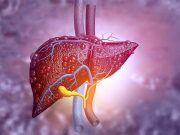Tag: DIOM
Antidepressants Vary Significantly in Cardiometabolic Effects
Clinically significant differences between antidepressants in terms of metabolic and hemodynamic effects
Three Cardiometabolic Risk Factors ID’d as Having the Highest Risk for Mortality in MASLD
Greatest risk for mortality seen with high blood pressure, glucose intolerance, and low high-density lipoprotein cholesterol
Weight-Loss Surgery Bests Medical Weight Management for Obesity-Related Risk Mitigation
Significantly lower risk seen for developing major metabolic comorbidities
Poor Cardiovascular-Kidney-Metabolic Health Increases Psoriasis Risk
Significantly higher risk for psoriasis noted, especially among those with high genetic risk
Healthy Plant-Based Diet May Cut Burden of Multimorbidity of Cancer and Cardiometabolic Diseases
Association marginally weaker in older than middle-aged adults
Screen Time Linked to Higher Cardiometabolic Risk in Children, Teens
Sleep duration significantly moderates the association, with higher risk seen for those with shorter sleep duration
Preemies’ Early-Life Medical Risk Tied to Worse Health at Age 35
Later-in-life challenges include increased occurrence of mental health disorders, cardiometabolic issues
Degree of Weight Loss Affects Tirzepatide-Linked Cardiometabolic Risk Improvement
Linear relationship seen for waist circumference, BP; reduction in HOMA-IR, hemoglobin A1c seen with modest weight reduction
Intermittent Fasting Reduces Body Weight Versus Ad Libitum Diet
Alternate-day fasting the only intermittent-fasting diet strategy to show benefit versus continuous energy restriction
Marine Microplastic Levels Linked to Cardiometabolic Disease Prevalence
Prevalence of type 2 diabetes, coronary artery disease, stroke increased in coastal counties with very high versus low MMLs














